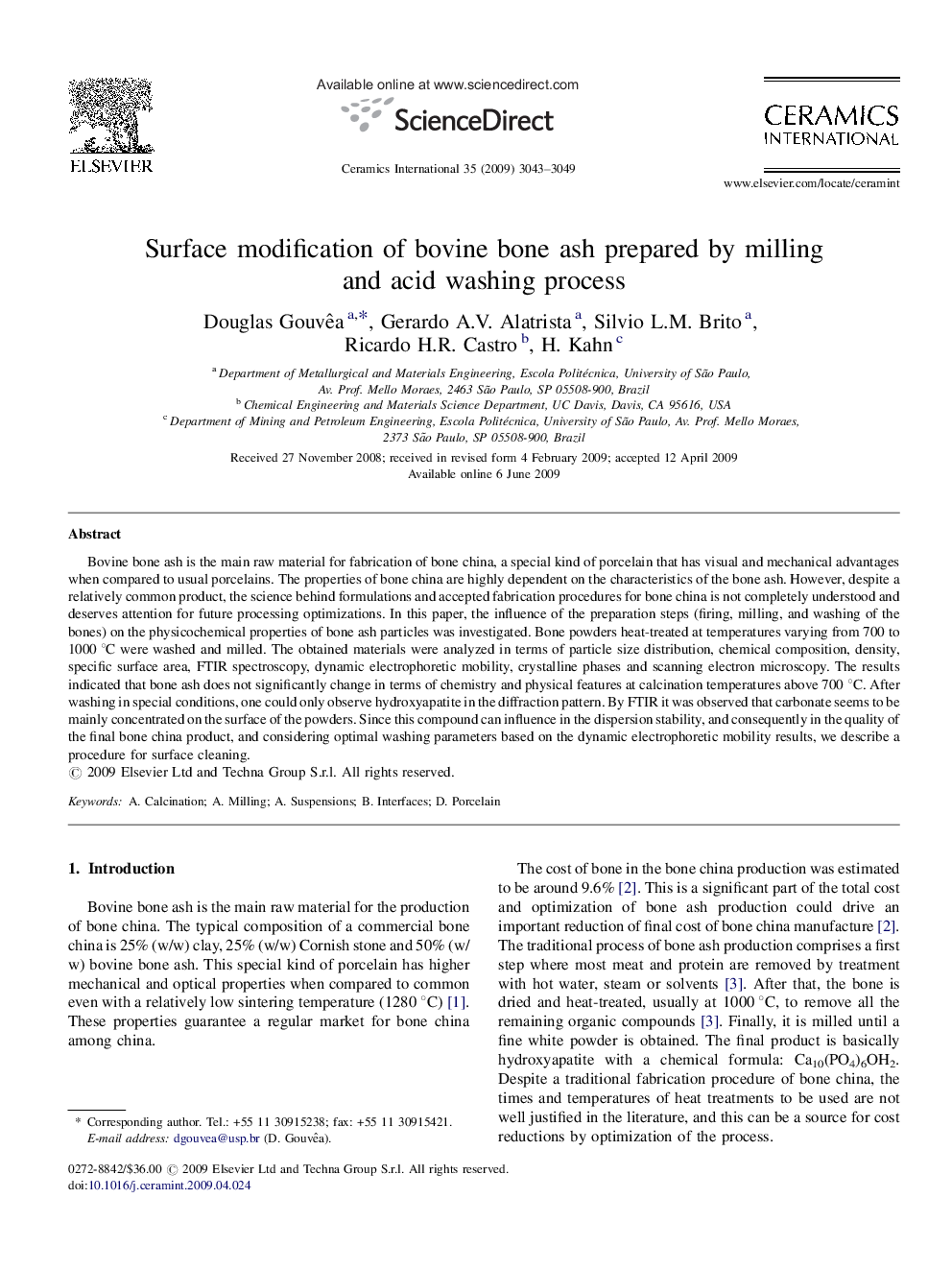| Article ID | Journal | Published Year | Pages | File Type |
|---|---|---|---|---|
| 1463282 | Ceramics International | 2009 | 7 Pages |
Bovine bone ash is the main raw material for fabrication of bone china, a special kind of porcelain that has visual and mechanical advantages when compared to usual porcelains. The properties of bone china are highly dependent on the characteristics of the bone ash. However, despite a relatively common product, the science behind formulations and accepted fabrication procedures for bone china is not completely understood and deserves attention for future processing optimizations. In this paper, the influence of the preparation steps (firing, milling, and washing of the bones) on the physicochemical properties of bone ash particles was investigated. Bone powders heat-treated at temperatures varying from 700 to 1000 °C were washed and milled. The obtained materials were analyzed in terms of particle size distribution, chemical composition, density, specific surface area, FTIR spectroscopy, dynamic electrophoretic mobility, crystalline phases and scanning electron microscopy. The results indicated that bone ash does not significantly change in terms of chemistry and physical features at calcination temperatures above 700 °C. After washing in special conditions, one could only observe hydroxyapatite in the diffraction pattern. By FTIR it was observed that carbonate seems to be mainly concentrated on the surface of the powders. Since this compound can influence in the dispersion stability, and consequently in the quality of the final bone china product, and considering optimal washing parameters based on the dynamic electrophoretic mobility results, we describe a procedure for surface cleaning.
